The Analysis and Application of Installation Tolerances in Prefabricated Construction Based on the Dimensional Chain Theory
Abstract
1. Introduction
2. Dimensional Tolerance Control of Components during Construction and Installation Stage
3. The Measurement of Fabrication and Installation Deviations of Prefabricated Components
3.1. The Measurement of Dimensional Deviations in Prefabricated Components
3.2. The Measurement of Installation Deviations in Prefabricated Components
4. Mathematical Distribution Characteristics of Installation Deviations in Prefabricated Concrete Components
4.1. Distribution Characteristics of Component Installation Position Deviations
4.2. Testing the Distribution of Component Installation Deviations
4.3. Installation Position Tolerance Based on Qualification Rate
5. The Tolerance Analysis Method for Dimensional Chain of Prefabricated Component Installation
5.1. The Dimensional Chain Theory
5.2. The Efficient Assembly Dimensional Chain Theory for Prefabricated Components
5.3. The Monte Carlo-Based Solution for Determining the Dimensional Chain of Component Installation
5.4. Principles of Optimal Solution for Dimensional Chain Optimization
6. Example of Dimensional Tolerance Calculation in Prefabricated Structures Based on Dimensional Chain Theory
6.1. Engineering Overview
6.2. Reliability of Component Installation within the Horizontal Axis
6.3. The Optimization of Prefabricated Component Manufacturing Sizes within the Horizontal Axis
6.4. Reliability of Component Installation within the Vertical Axis
6.5. The Optimization of Prefabricated Component Manufacturing Sizes within Vertical Axis
7. Conclusions
- Based on the measured data of installation deviations of prefabricated components, these deviations followed a log-normal distribution. The parameters of the log-normal distribution were fitted to the data, and a functional relationship between the deviation in component installation position and the qualification rate was established by analyzing the qualification rates corresponding to different installation position deviation values;
- Within the allowable deviation values specified in the standards, the qualification rate for the installation position of prefabricated wall panels was found to be 88.6%, while the qualification rate for column axial positions was 92.2%. Based on qualification rates of 80% and 90%, the allowable deviation for wall axial positions can be set at 5.8 mm and 8.6 mm, respectively, while the allowable deviation for column axial positions can be set at 6.6 mm and 7.3 mm;
- Based on the relationship between installation reliability and component dimensions, the manufacturing dimensions of components were determined by optimizing the interface conditions. When the interface size was minimized, the component dimensions were maximized, while the component dimensions were minimized when the interface size was maximized. In the installation size chain of prefabricated components, if the difference between the axis size and the cumulative component size was negative, it was considered unreliable for installation. Conversely, if the difference was positive, it was considered reliable for installation;
- The manufacturing dimensions were adjusted to improve the installation reliability of prefabricated buildings. The installation reliability of components within the horizontal axis was relatively low, at 83.6%, when assembled based on the design dimensions. However, by reducing the fabrication dimensions of beam length and column width, the installation reliability could be improved. A reduction of 2.3 mm to 2.9 mm in the manufacturing sizes of components within the horizontal axis achieved a 95% installation reliability. Within the vertical axis, when assembled based on the design dimensions, the installation reliability of components was 88.4%. By reducing the fabrication dimensions of column length by 0.9 mm to 2.2 mm and reducing the beam height by 0.9 mm to 2.2 mm, a 95% installation reliability can be achieved.
Author Contributions
Funding
Data Availability Statement
Conflicts of Interest
Nomenclature
| standard normal distribution function | |
| average value | |
| standard deviation | |
| log-normal distribution parameter | |
| transfer coefficient | |
| design dimension of wall panel components | |
| deviation in wall panel component dimensions | |
| deviation in column component dimensions | |
| dimension of joints | |
| installation deviation of wall panels | |
| modular dimension (axis size) | |
| installation reliability index | |
| cumulative increment of the closed loop | |
| n | number of joints within the axis |
| C | column length |
| B | beam height |
| W | joint width |
| La | axis dimension |
| Cn | column width |
| Bn | beam length |
References
- Hong, J.; Shen, G.Q.; Li, Z.; Zhang, B.; Zhang, W. Barriers to promoting prefabricated construction in China: A cost–benefit analysis. J. Clean. Prod. 2018, 172, 649–660. [Google Scholar] [CrossRef]
- Gunawardena, T.; Mendis, P. Prefabricated building systems—Design and construction. Encyclopedia 2022, 2, 70–95. [Google Scholar] [CrossRef]
- Xiao, Y.; Bhola, J. Design and optimization of prefabricated building system based on BIM technology. Int. J. Syst. Assur. Eng. Manag. 2022, 13, 111–120. [Google Scholar] [CrossRef]
- Navaratnam, S.; Satheeskumar, A.; Zhang, G.; Nguyen, K.; Venkatesan, S.; Poologanathan, K. The challenges confronting the growth of sustainable prefabricated building construction in Australia: Construction industry views. J. Build. Eng. 2022, 48, 103935. [Google Scholar] [CrossRef]
- Burgess, R.A. Aspects of dimensional control in the production of large precast concrete units. Int. J. Prod. Res. 1972, 10, 113–127. [Google Scholar] [CrossRef]
- Ballast, D.K. Handbook of Construction Tolerances; John Wiley & Sons: Hoboken, NJ, USA, 2007; ISBN 0471931519. [Google Scholar]
- Liu, P.; Chen, Y.; Luo, X.; Yu, Z.; Long, H. Dimensional tolerance control for prefabricated building components. ACI Struct. J. 2019, 116, 101–114. [Google Scholar] [CrossRef]
- Talebi, S.; Koskela, L.; Shelbourn, M.; Tzortzopoulos, P. Critical review of tolerance management in construction. In Proceedings of the 24th Annual Conference of the International Group for Lean Construction, Boston, MA, USA, 18–24 July 2016. [Google Scholar]
- Friedman, A.; Cammalleri, V. Prefabricated wall systems and the North American home-building industry: North American survey of prefabricated panel systems conducted to examine the characteristics of the products and to determine their weakness in acquiring acceptance by the average builder. Build. Res. Inf. 1993, 21, 209–215. [Google Scholar]
- Thai, H.; Ngo, T.; Uy, B. A review on modular construction for high-rise buildings. Structures 2020, 28, 1265–1290. [Google Scholar] [CrossRef]
- Rausch, C.; Nahangi, M.; Perreault, M.; Haas, C.T.; West, J. Optimum assembly planning for modular construction components. J. Comput. Civil Eng. 2017, 31, 4016039. [Google Scholar] [CrossRef]
- Shahtaheri, Y.; Rausch, C.; West, J.; Haas, C.; Nahangi, M. Managing risk in modular construction using dimensional and geometric tolerance strategies. Automat. Constr. 2017, 83, 303–315. [Google Scholar] [CrossRef]
- Kim, K.; Cho, Y.K. Construction-specific spatial information reasoning in building information models. Adv. Eng. Inform. 2015, 29, 1013–1027. [Google Scholar] [CrossRef]
- Wang, Y.; Yuan, Z.; Sun, C. Research on assembly sequence planning and optimization of precast concrete buildings. J. Civ. Eng. Manag. 2018, 24, 106–115. [Google Scholar] [CrossRef]
- MNL-135-00; Tolerance Manual for Precast and Prestressed Concrete Construction. PCI Committee on Tolerances: Chicago, IL, USA, 2000.
- ACI 117-2010; Specification for Tolerances for Concrete Construction and Materials (ACI 117-10) and Commentary. American Concrete Institute: Farmington Hills, MI, USA, 2010.
- DIN 18202-1997; Standardization, I.O.F. Tolerances for Building Structures. Deutsches Institut für Normung: Berlin, Germany, 1997.
- GB/T 50204-2015; Code for Quality Acceptance of Concrete Structure Construction. China Architecture & Building Press: Beijing, China, 2015.
- GB/T 51231-2016; Technical Standard for Assembled Buildings with Concrete Structure. China Architecture & Building Press: Beijing, China, 2016.
- JGJ1-2014; Technical Specification for Precast Concrete Structures. China Architecture & Building Press: Beijing, China, 2014.
- Long, H.; Luo, X.; Liu, J.; Xiang, H. Distribution Features of Deviation and Determination of a Tolerance Method for Prefabricated Concrete Components. Buildings 2023, 13, 1142. [Google Scholar] [CrossRef]
- Galantucci, R.A.; Fatiguso, F. Advanced damage detection techniques in historical buildings using digital photogrammetry and 3D surface anlysis. J. Cult. Herit. 2019, 36, 51–62. [Google Scholar] [CrossRef]
- Tan, Y.; Shi, Y.; Li, Y.; Xu, B. Automatic Registration Method of Multi-Source Point Clouds Based on Building Facades Matching in Urban Scenes. Photogramm. Eng. Remote Sens. 2022, 88, 767–782. [Google Scholar] [CrossRef]
- Xu, Z.; Kang, R.; Lu, R. 3D reconstruction and measurement of surface defects in prefabricated elements using point clouds. J. Comput. Civil Eng. 2020, 34, 4020033. [Google Scholar] [CrossRef]
- Luo, X.; Long, H.; Dong, S.; Wu, J. Prefabricated Concrete Component Geometry Deviation Statistical Analysis. Math. Probl. Eng. 2021, 23, 325. [Google Scholar] [CrossRef]
- Wang, M.; Wang, C.C.; Zlatanova, S.; Sepasgozar, S.; Aleksandrov, M. Onsite Quality Check for Installation of Prefabricated Wall Panels Using Laser Scanning. Buildings 2021, 11, 412. [Google Scholar] [CrossRef]
- Das, K.R.; Imon, A. A brief review of tests for normality. Am. J. Theor. Appl. Stat. 2016, 5, 5–12. [Google Scholar]
- Koch, A.L. The logarithm in biology 1. Mechanisms generating the log-normal distribution exactly. J. Theor. Biol. 1966, 12, 276–290. [Google Scholar] [CrossRef]
- Tripathi, P.; Srivastava, V.C.; Kumar, A. Optimization of an azo dye batch adsorption parameters using Box–Behnken design. Desalination 2009, 249, 1273–1279. [Google Scholar] [CrossRef]
- Swamee, P.K. Near lognormal distribution. J. Hydrol. Eng. 2002, 7, 441–444. [Google Scholar] [CrossRef]
- Bertsche, B. Reliability in Automotive and Mechanical Engineering: Determination of Component and System Reliability; Springer Science & Business Media: Berlin/Heidelberg, Germany, 2008; ISBN 3540342826. [Google Scholar]
- Liu, C. Tolerance redistributing of the reassembly dimensional chain on measure of uncertainty. Entropy 2016, 18, 348. [Google Scholar] [CrossRef]
- Zhang, Y.; Zhang, L. Graph Theory Solution Method to Solve the Complex Assembly Dimension Chain. In Proceedings of the 2017 7th International Conference on Mechatronics, Computer and Education Informationization (MCEI 2017), Shenyang, China, 3–5 November 2017; pp. 661–664. [Google Scholar]
- Singh, M.M.; Sawhney, A.; Borrmann, A. Integrating rules of modular coordination to improve model authoring in BIM. Int. J. Constr. Manag. 2019, 19, 15–31. [Google Scholar] [CrossRef]
- Huang, J.C. Cumulative Distribution Networks: Inference, Estimation and Applications of Graphical Models for Cumulative Distribution Functions; University of Toronto: Toronto, ON, Canada, 2009; ISBN 0494609796. [Google Scholar]
- Wu, S.; Ye, Q.; Chen, C.; Gu, X. Research on data reconciliation based on generalized T distribution with historical data. Neurocomputing 2016, 175, 808–815. [Google Scholar] [CrossRef]

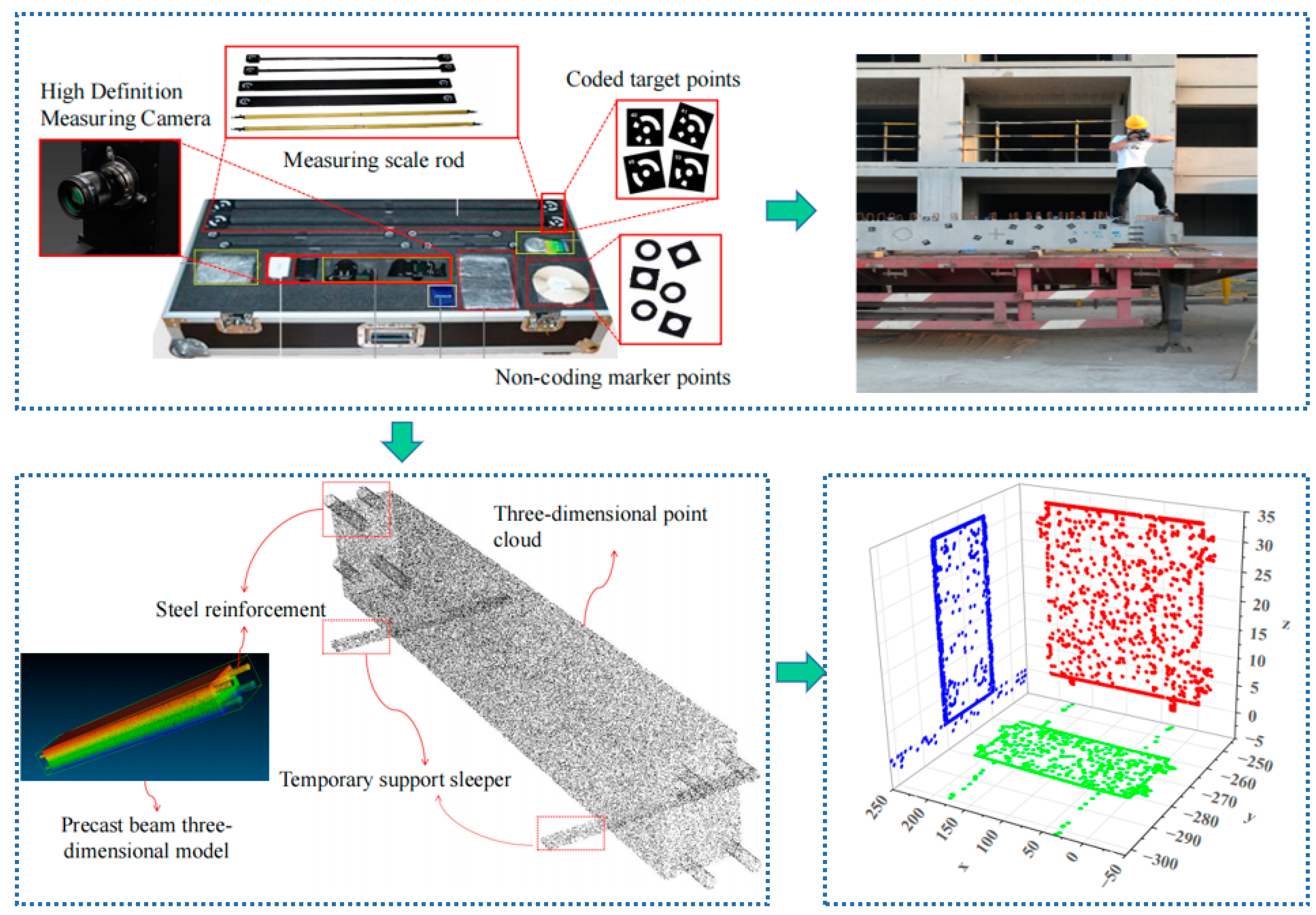

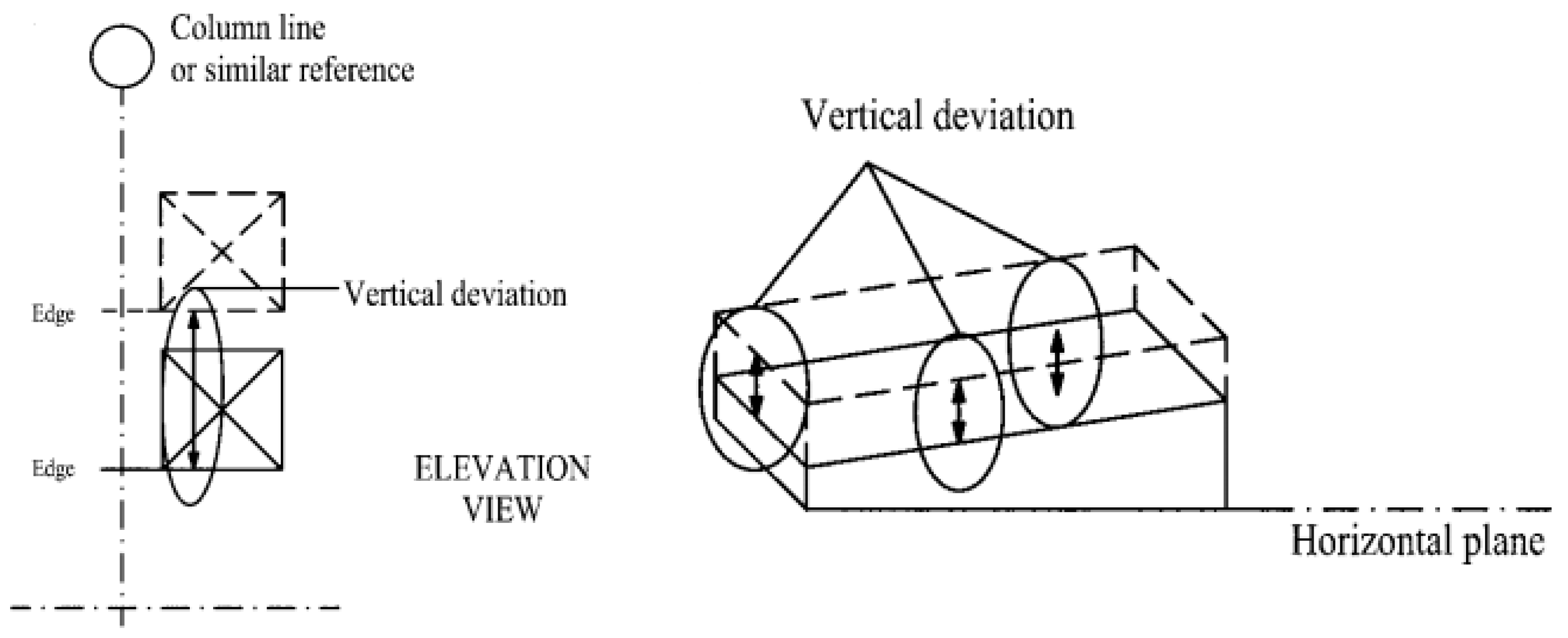
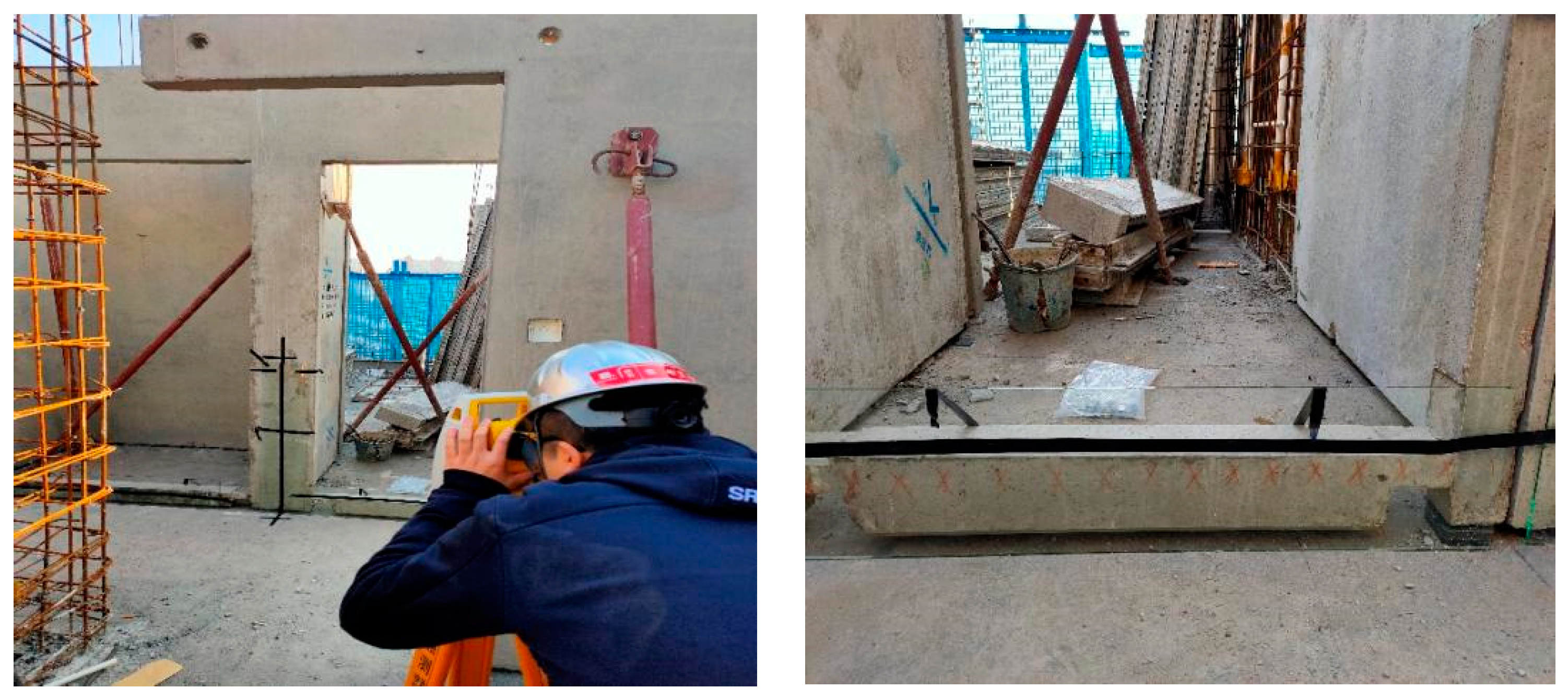

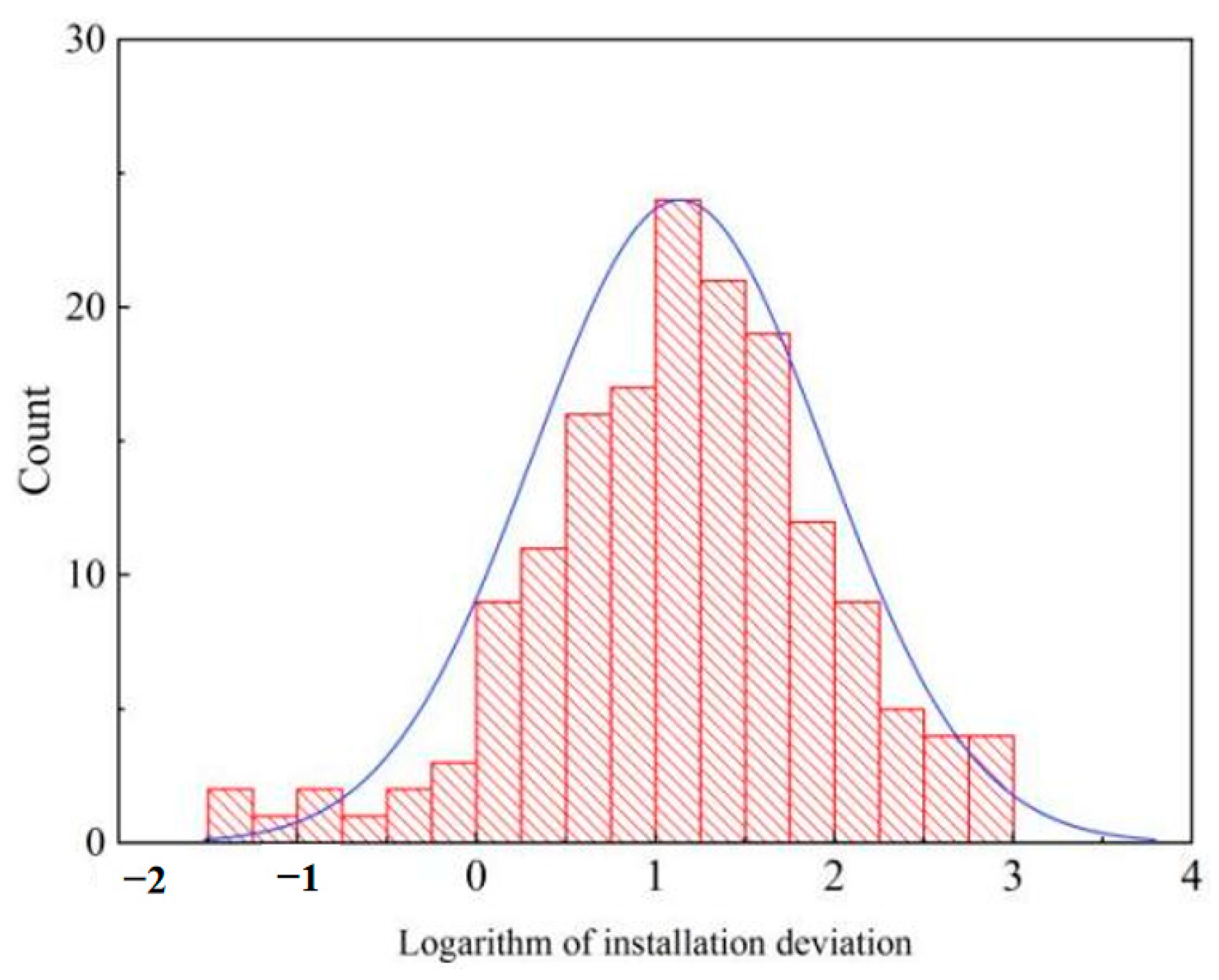
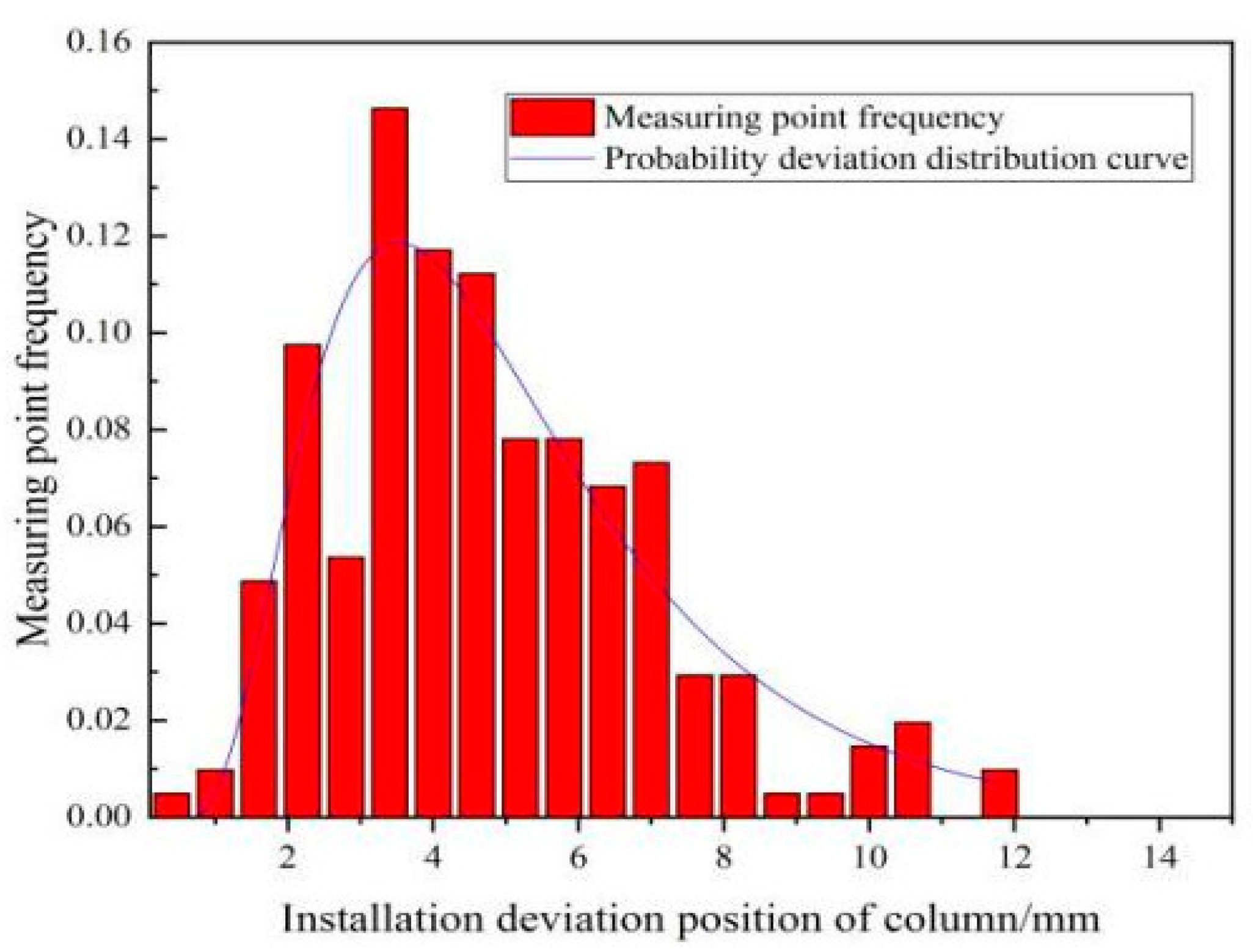
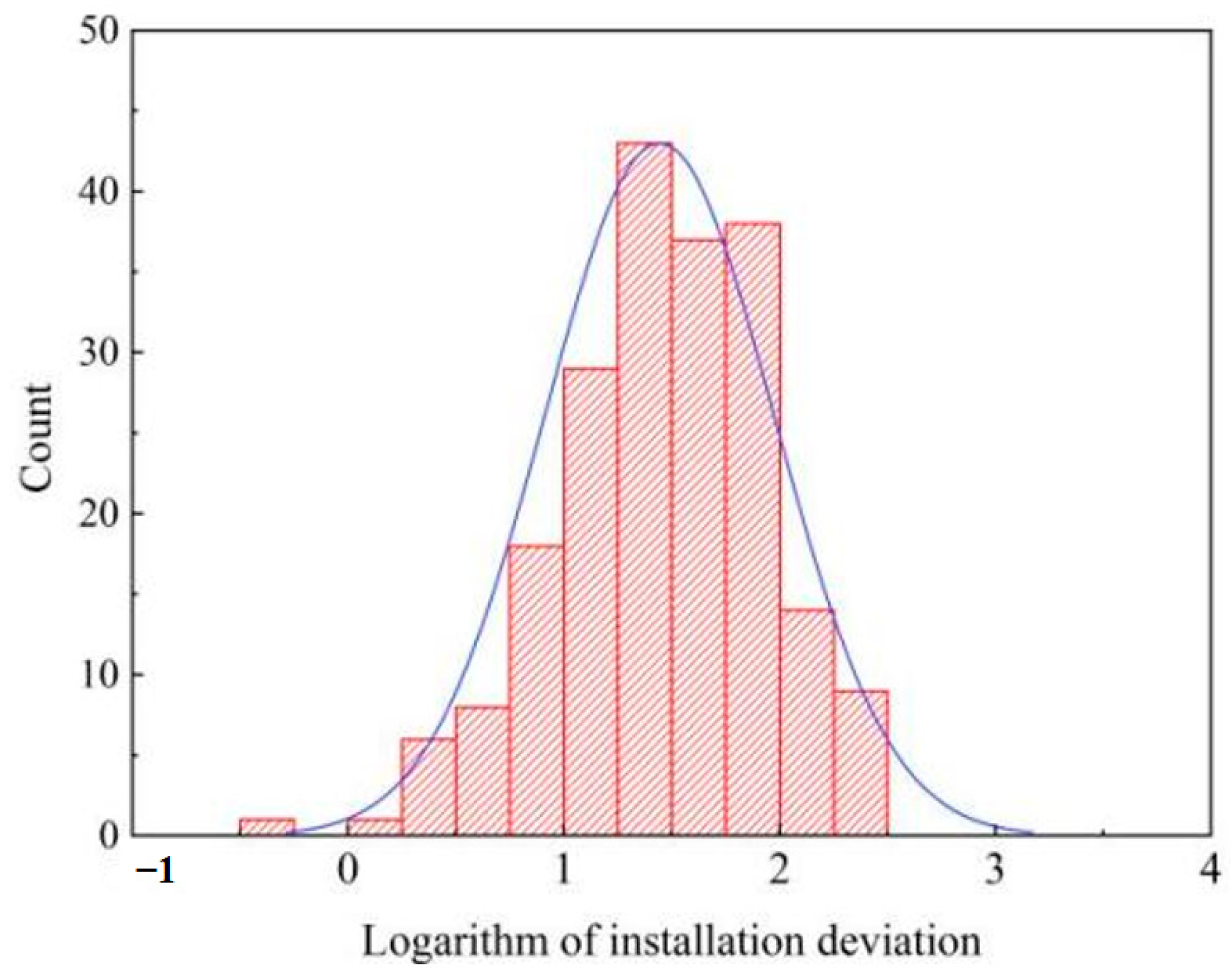
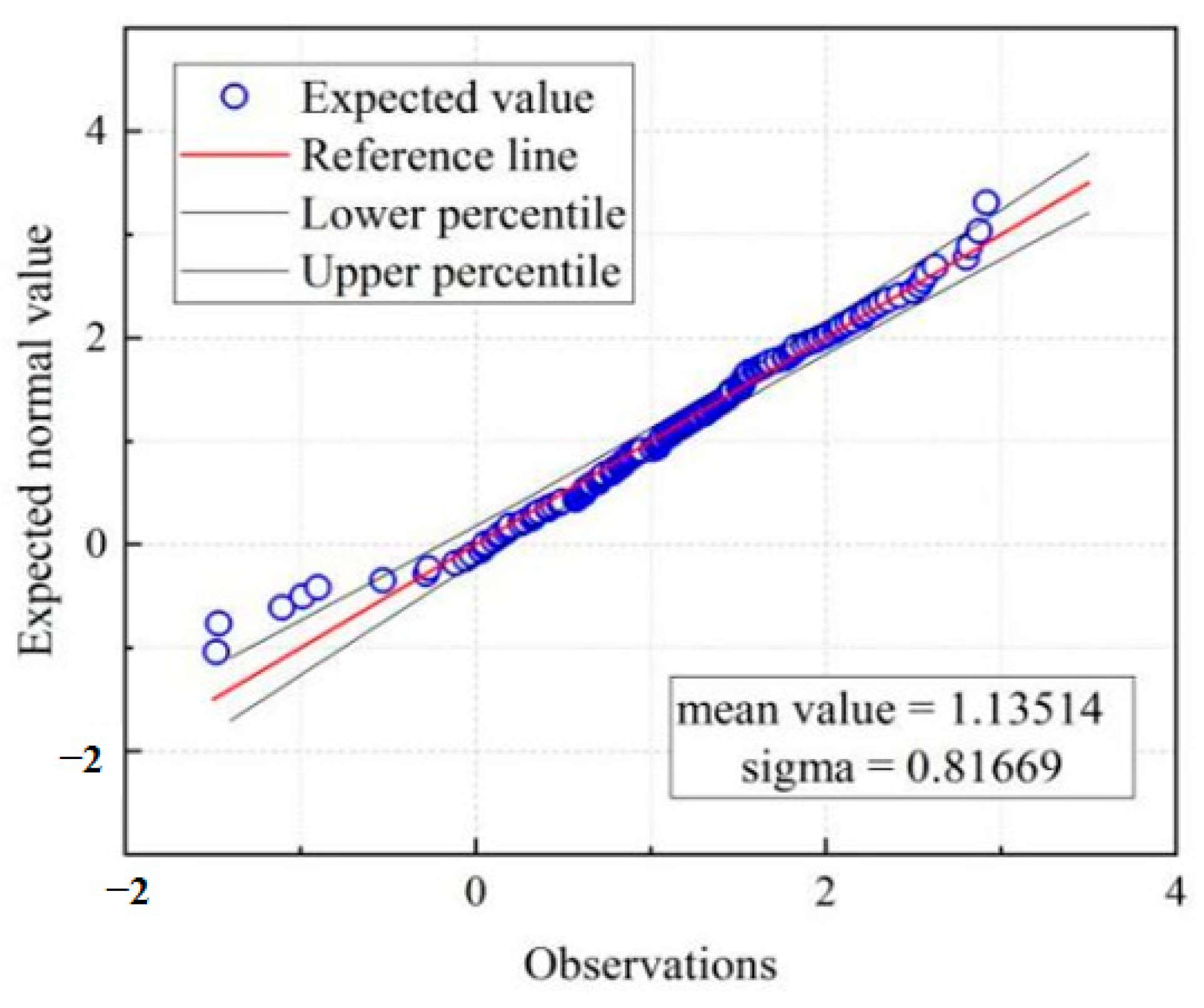
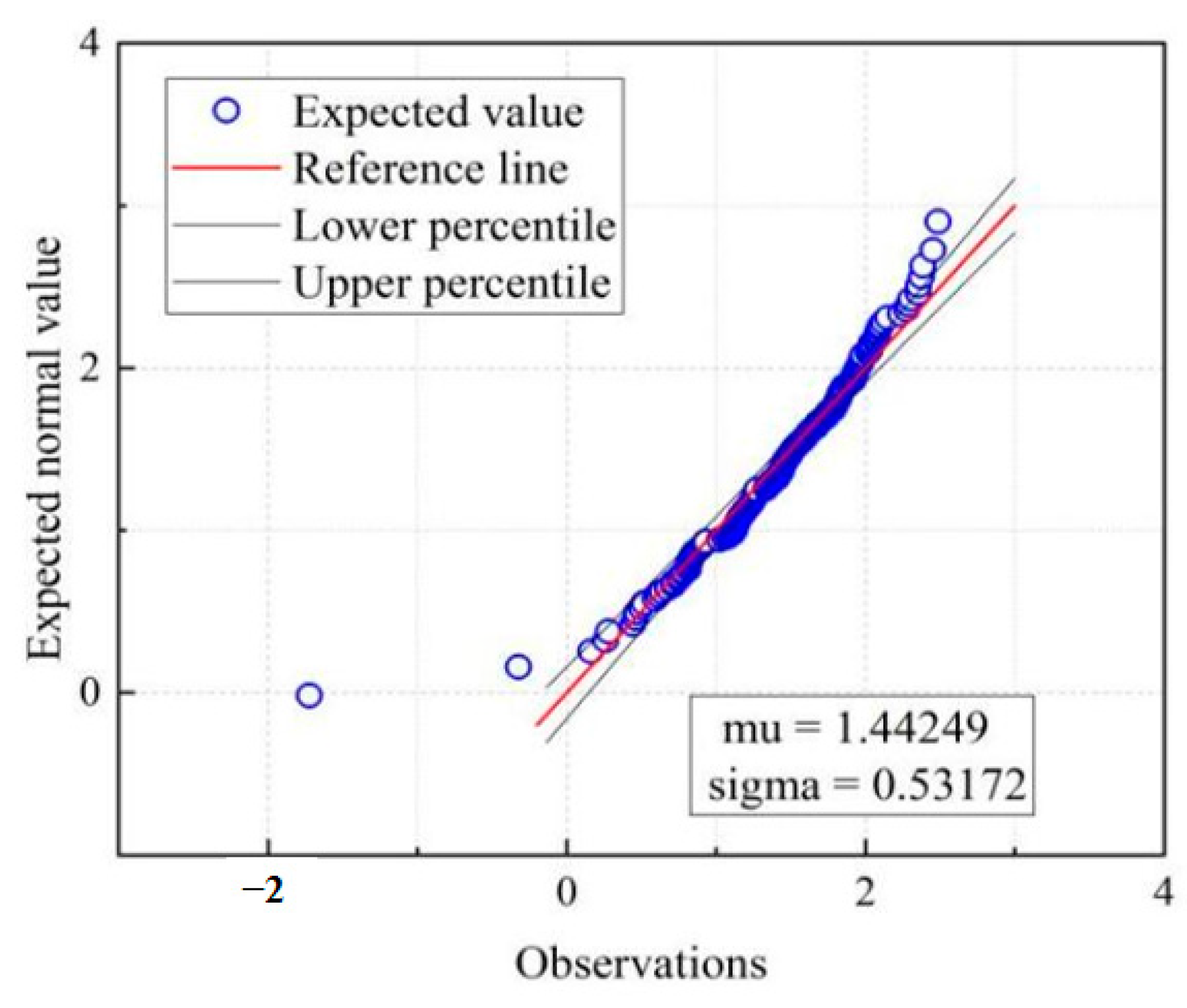
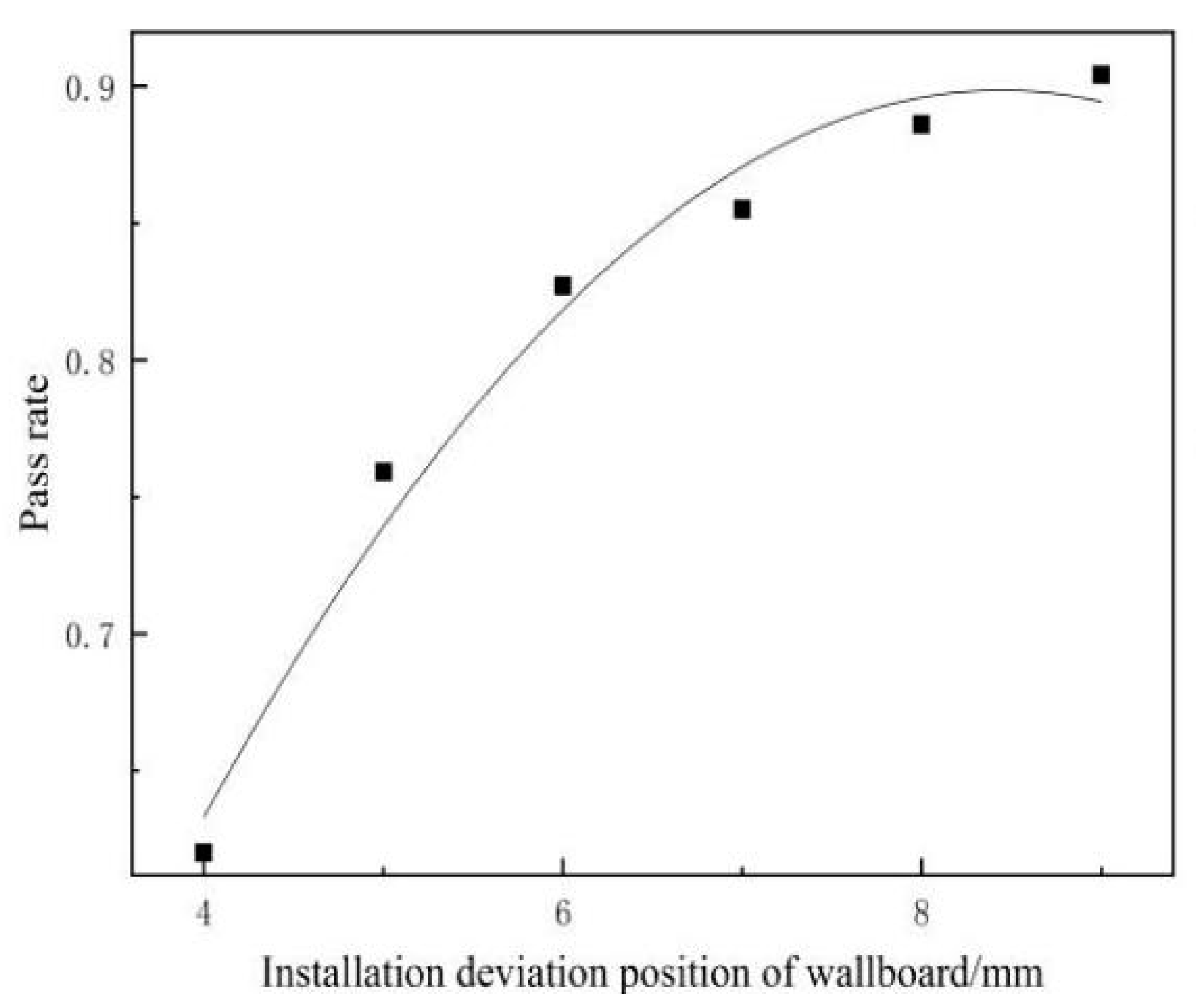
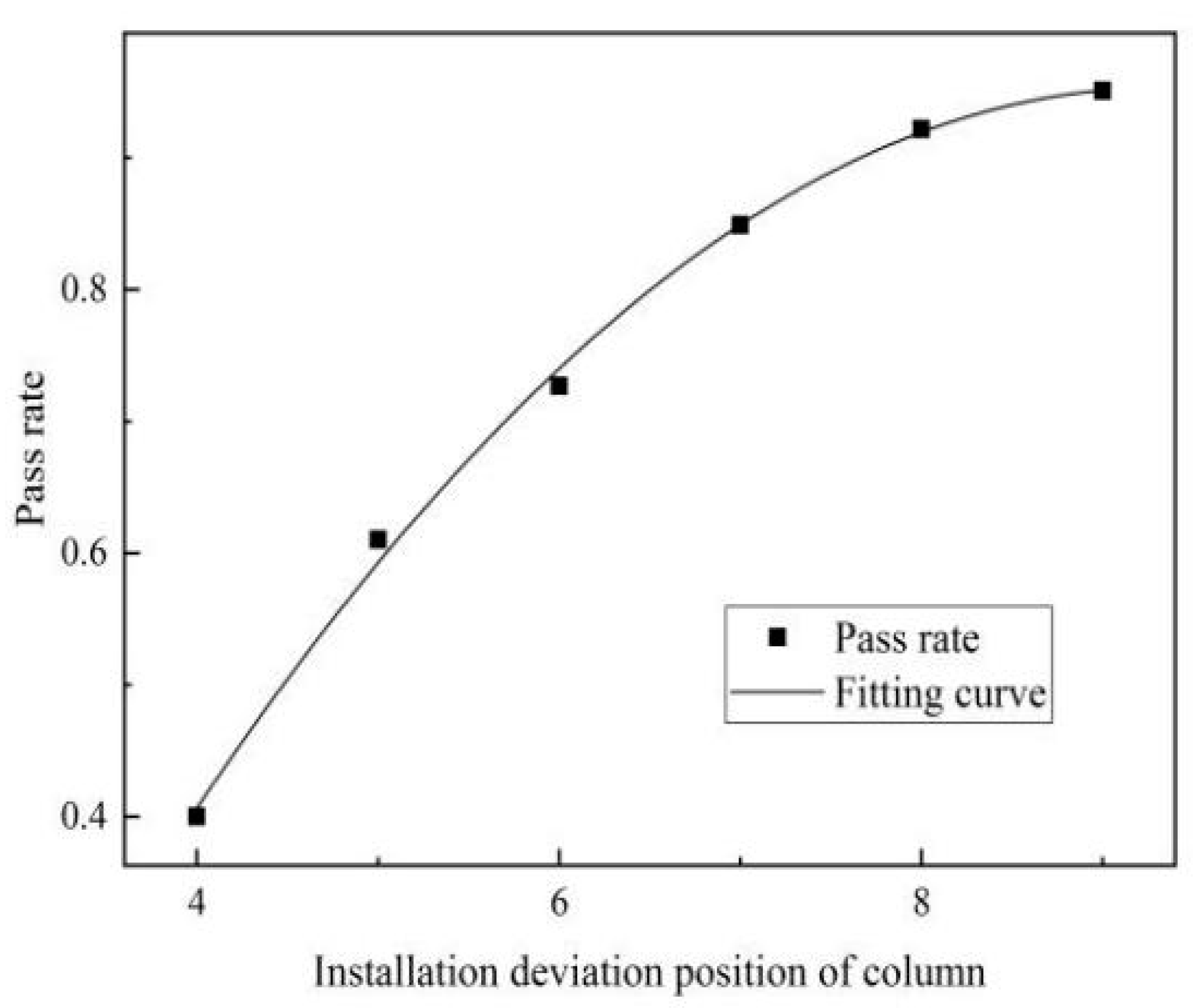

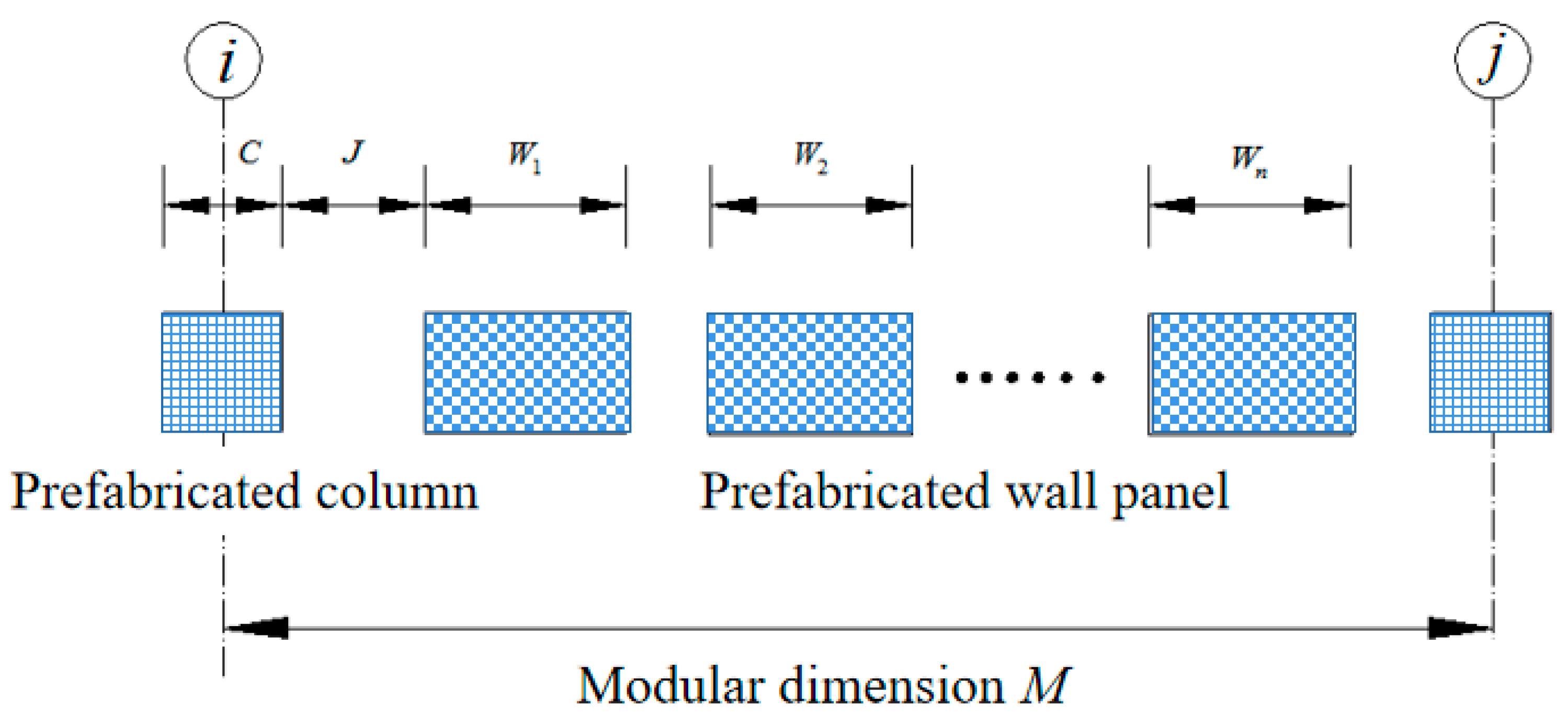
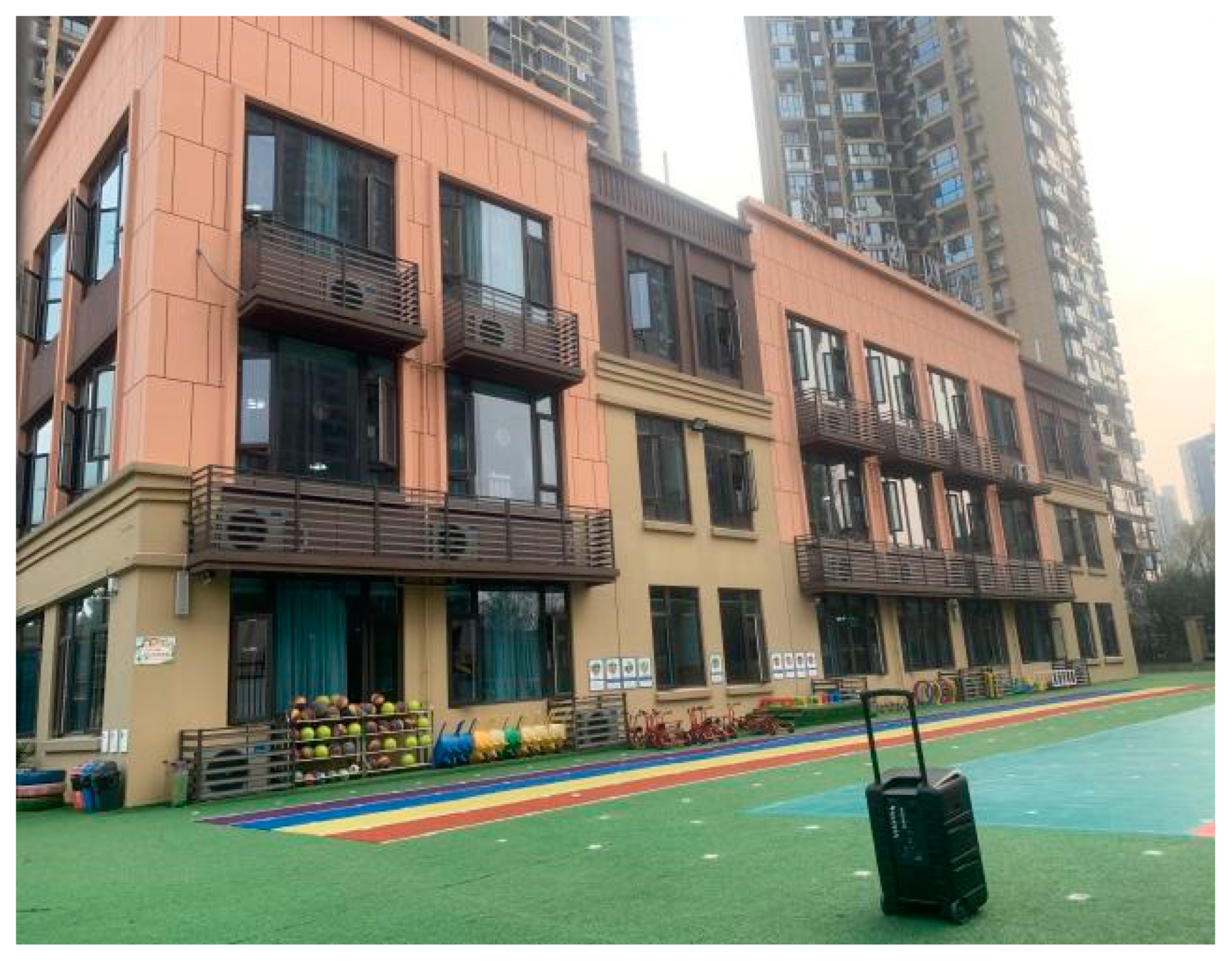
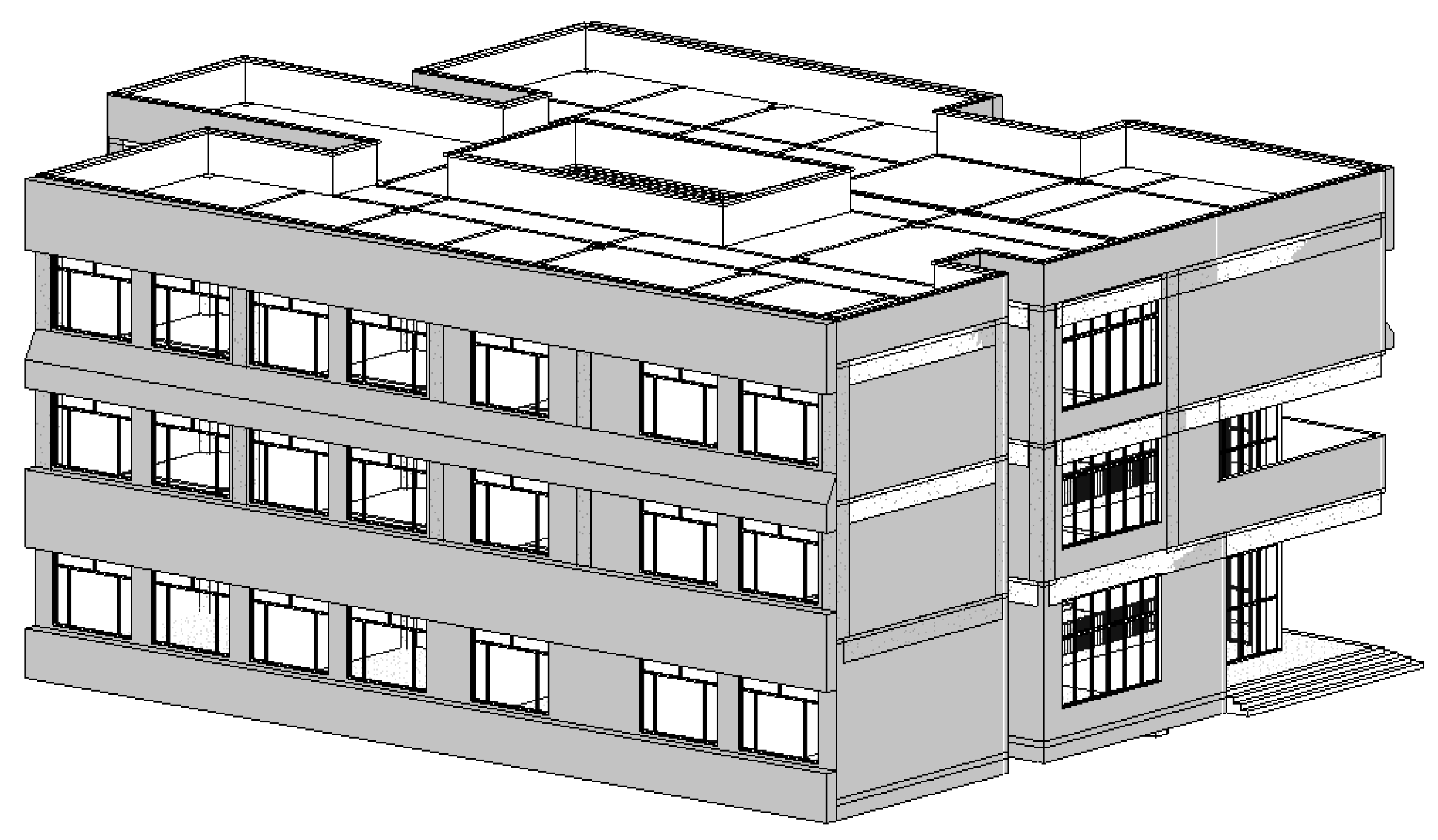

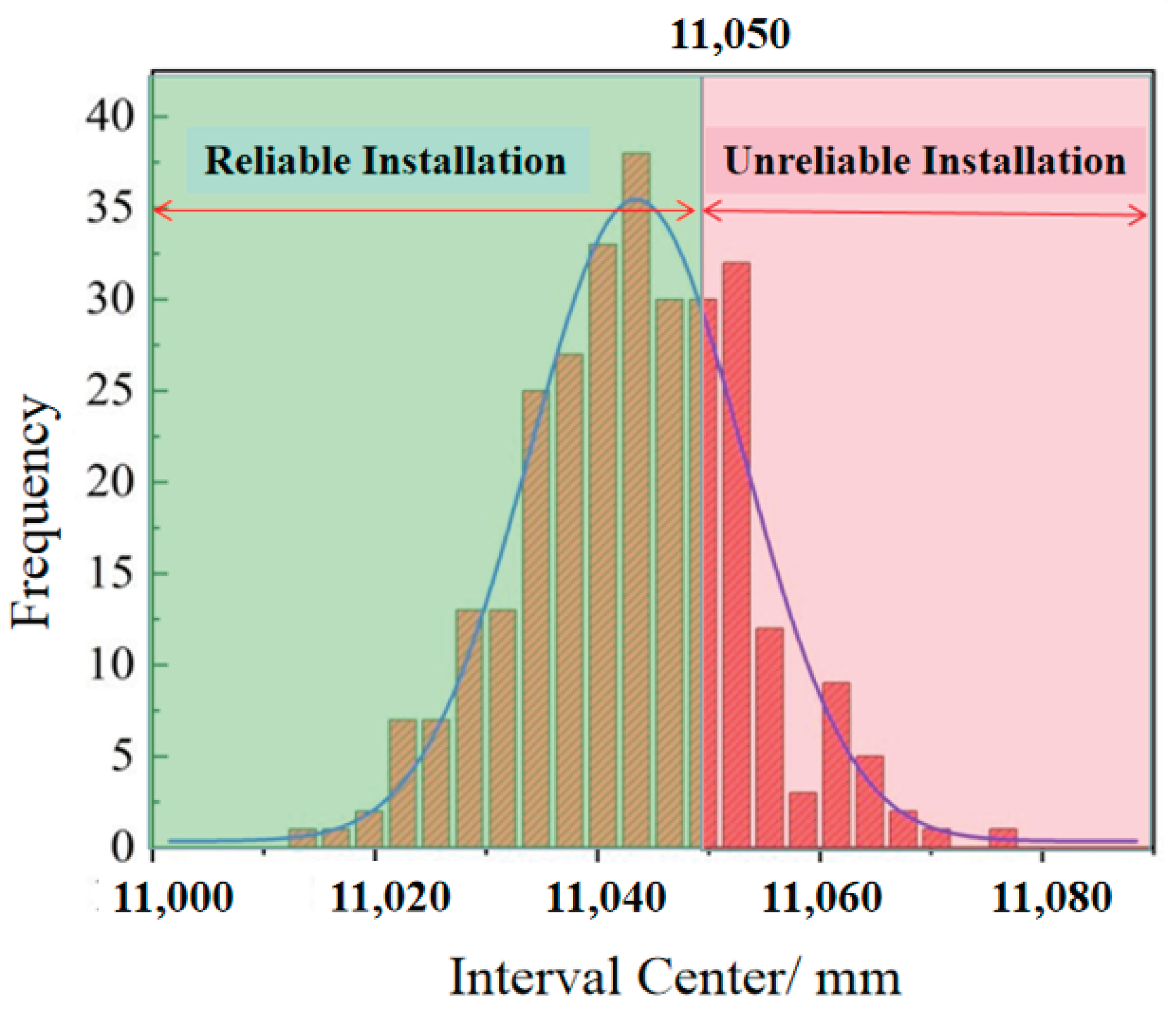
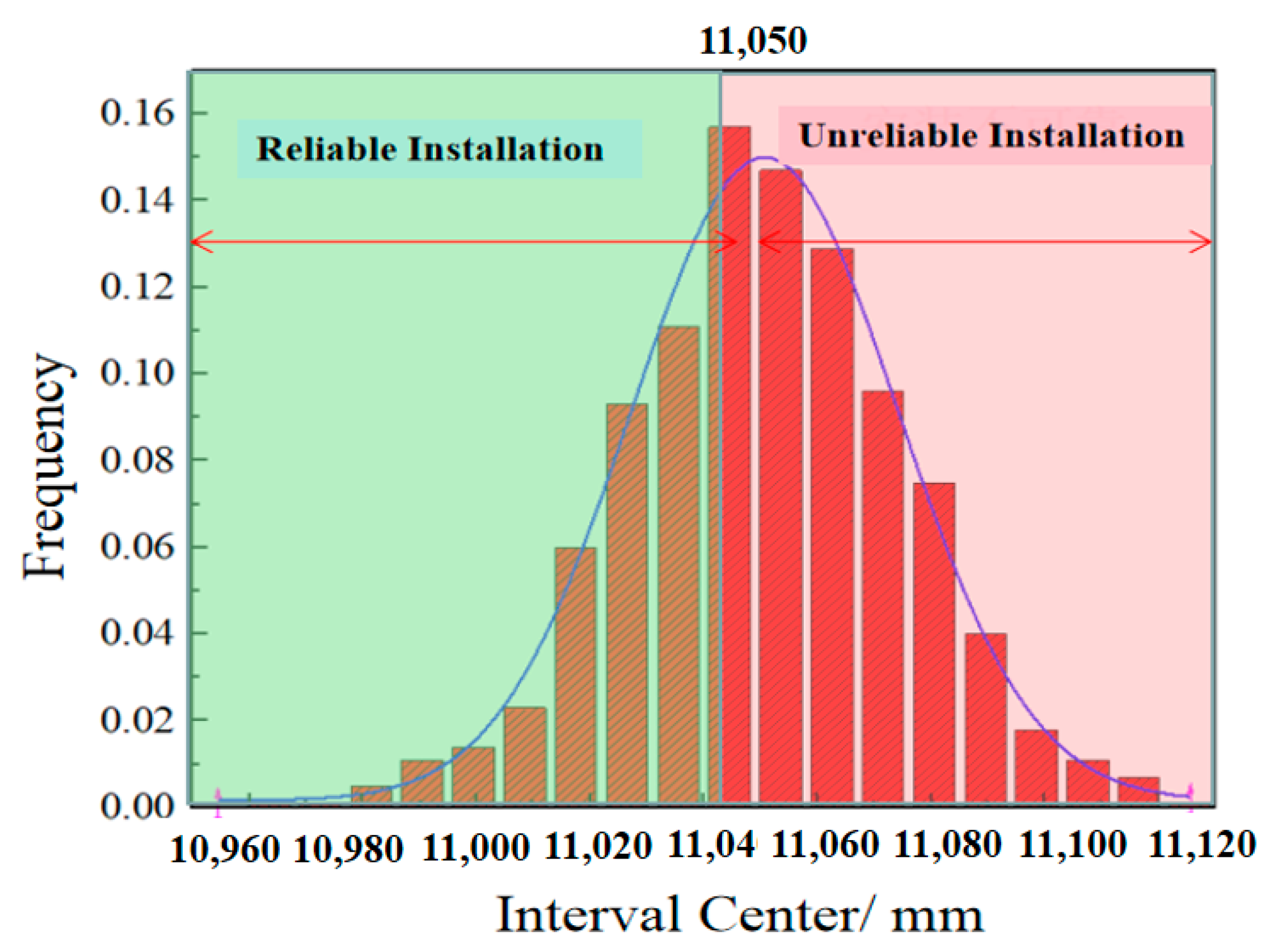
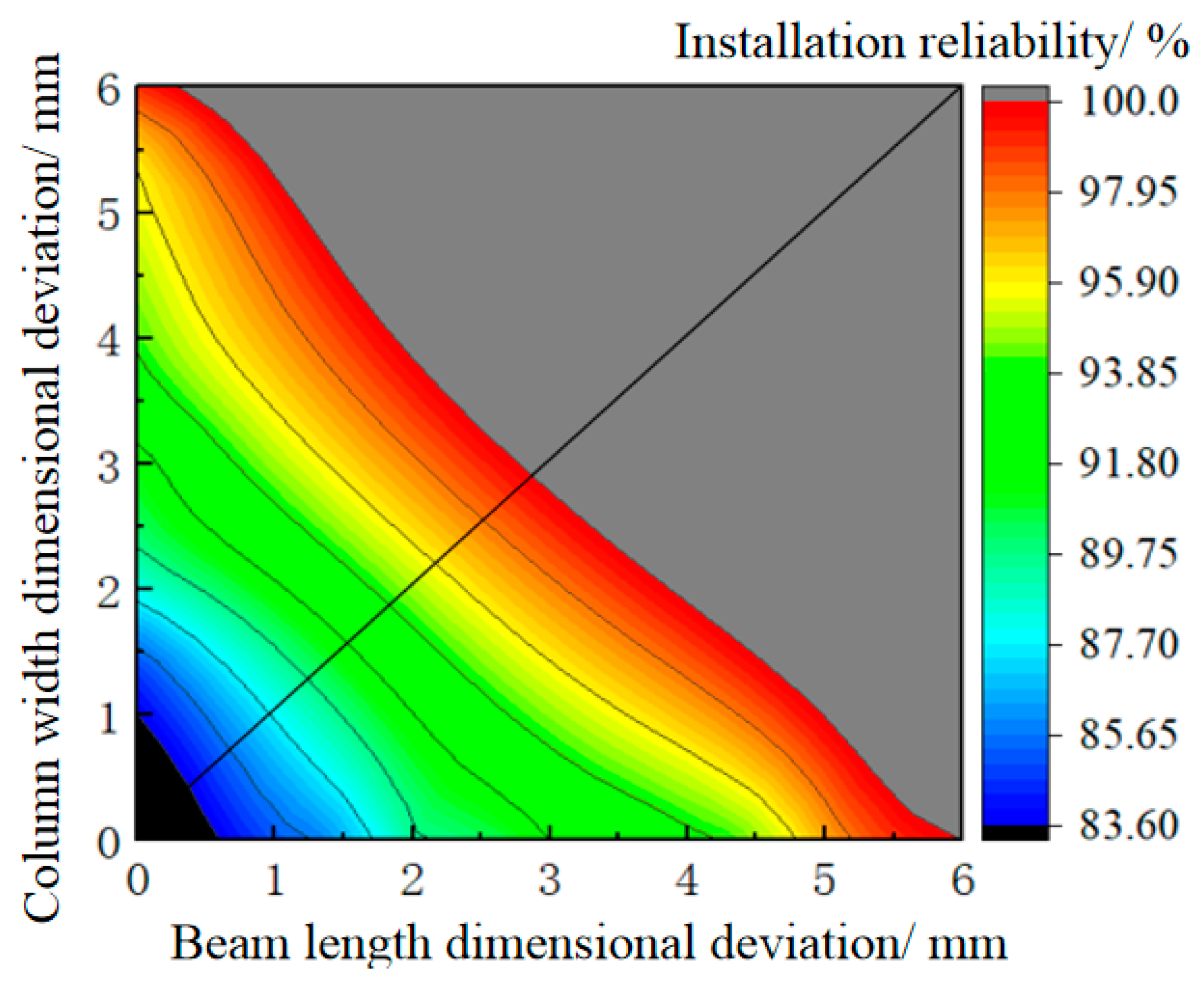
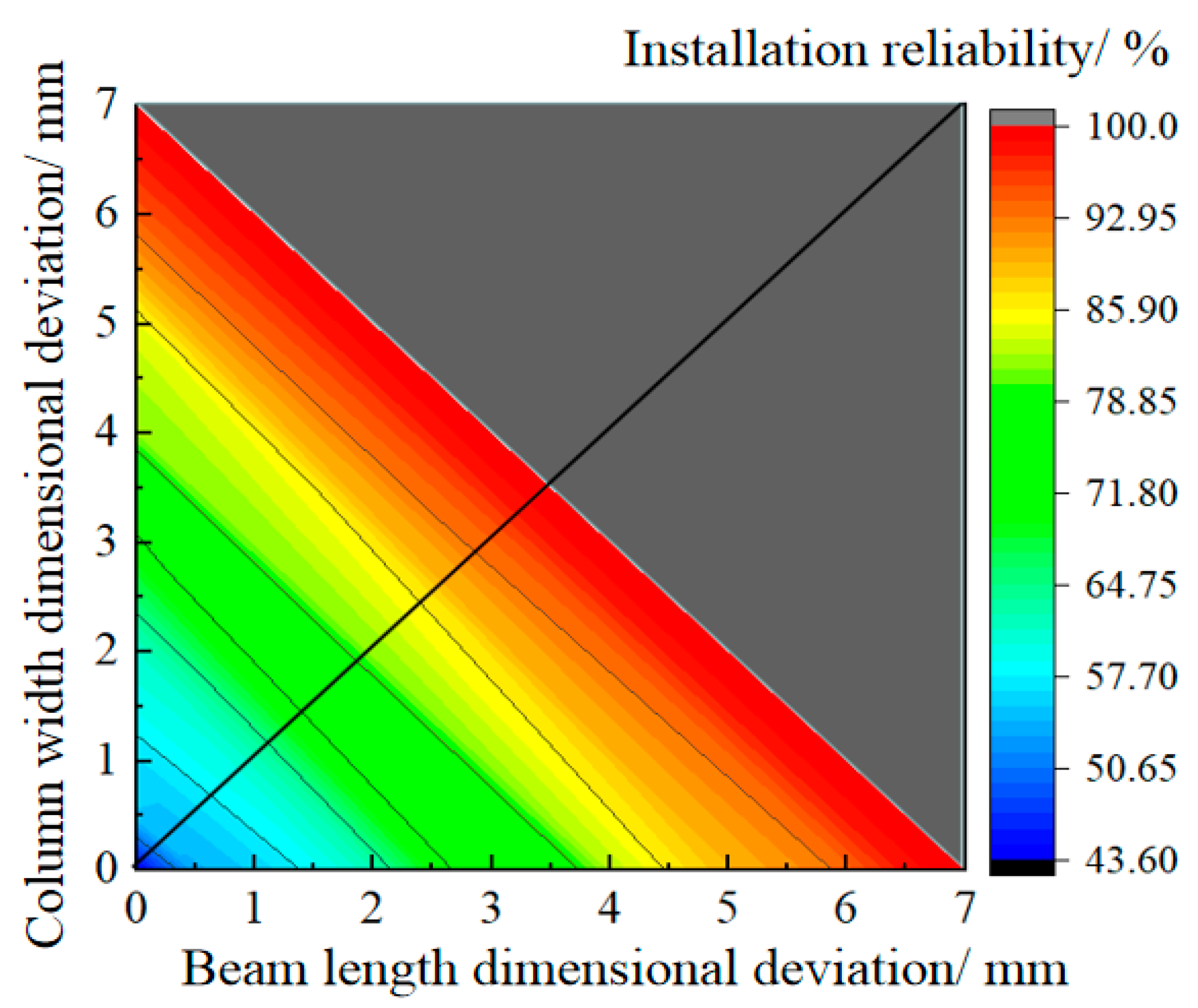
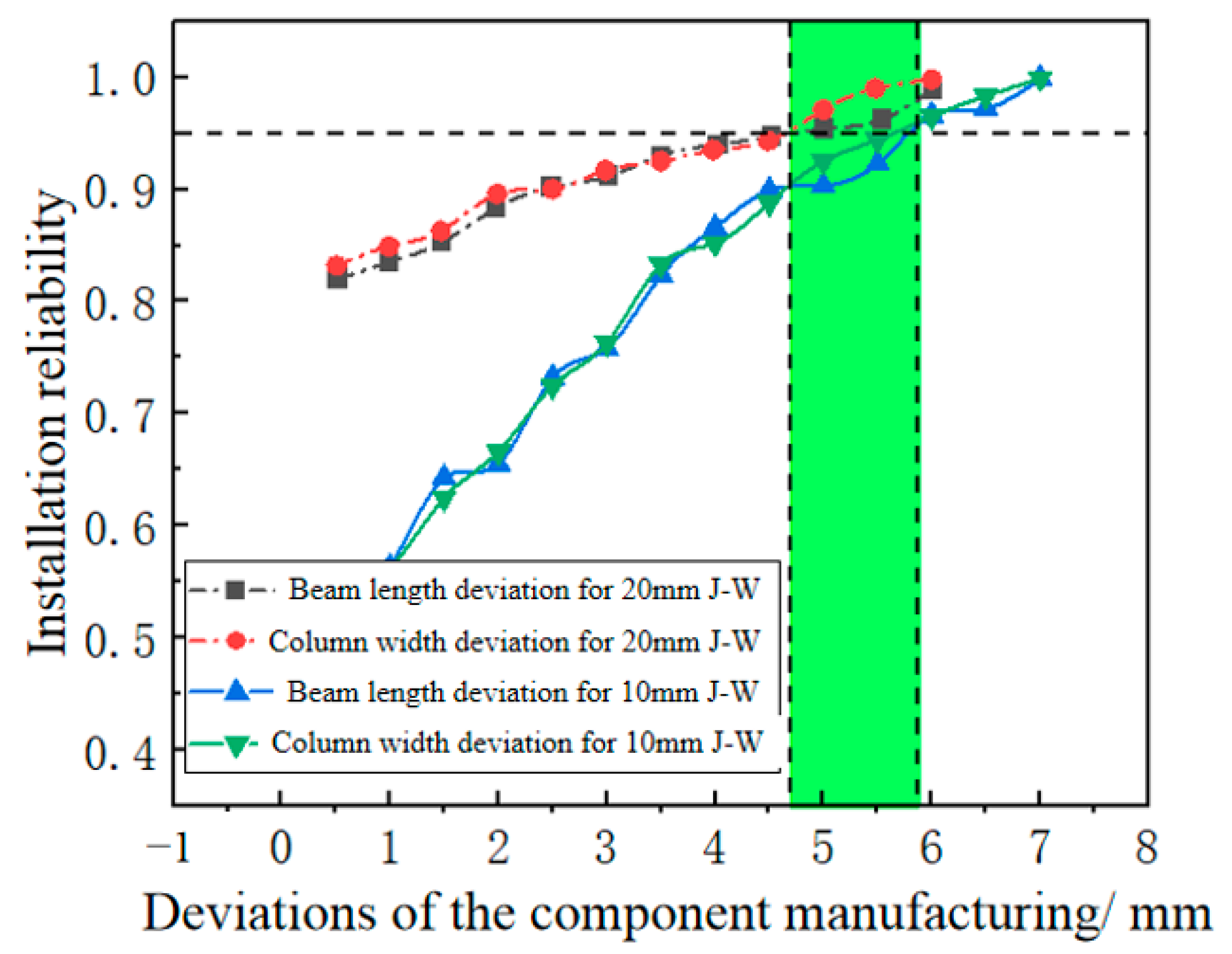

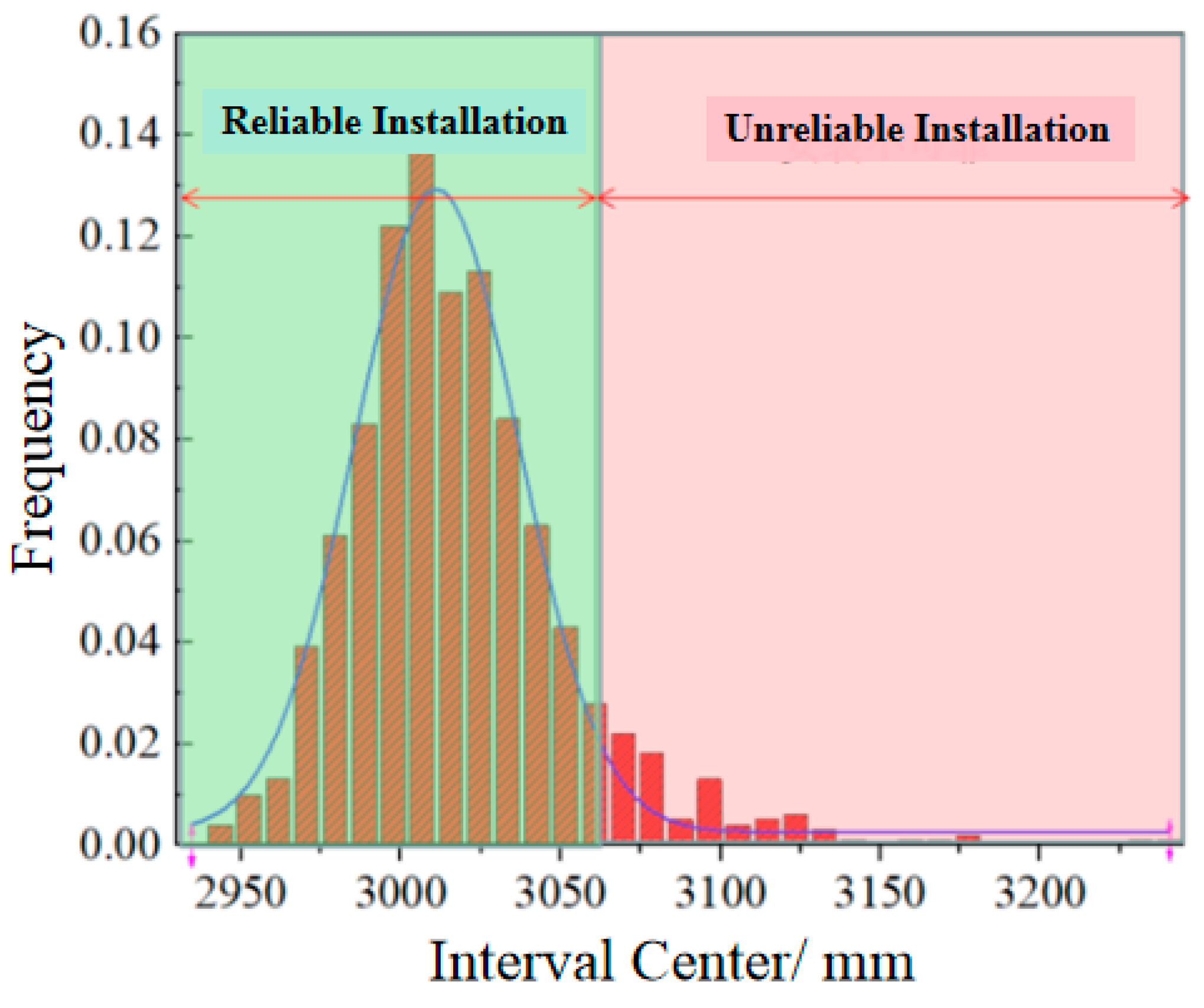
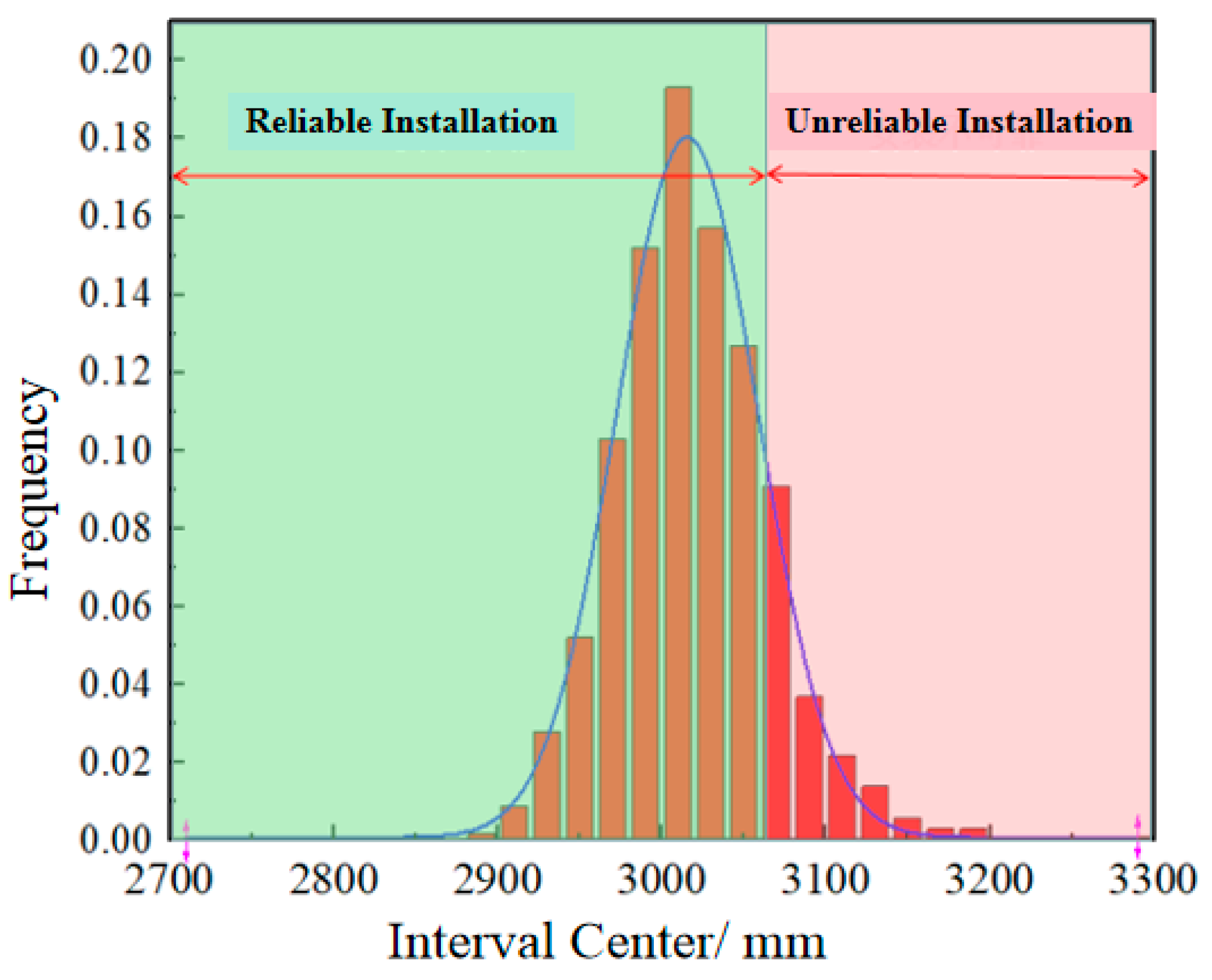
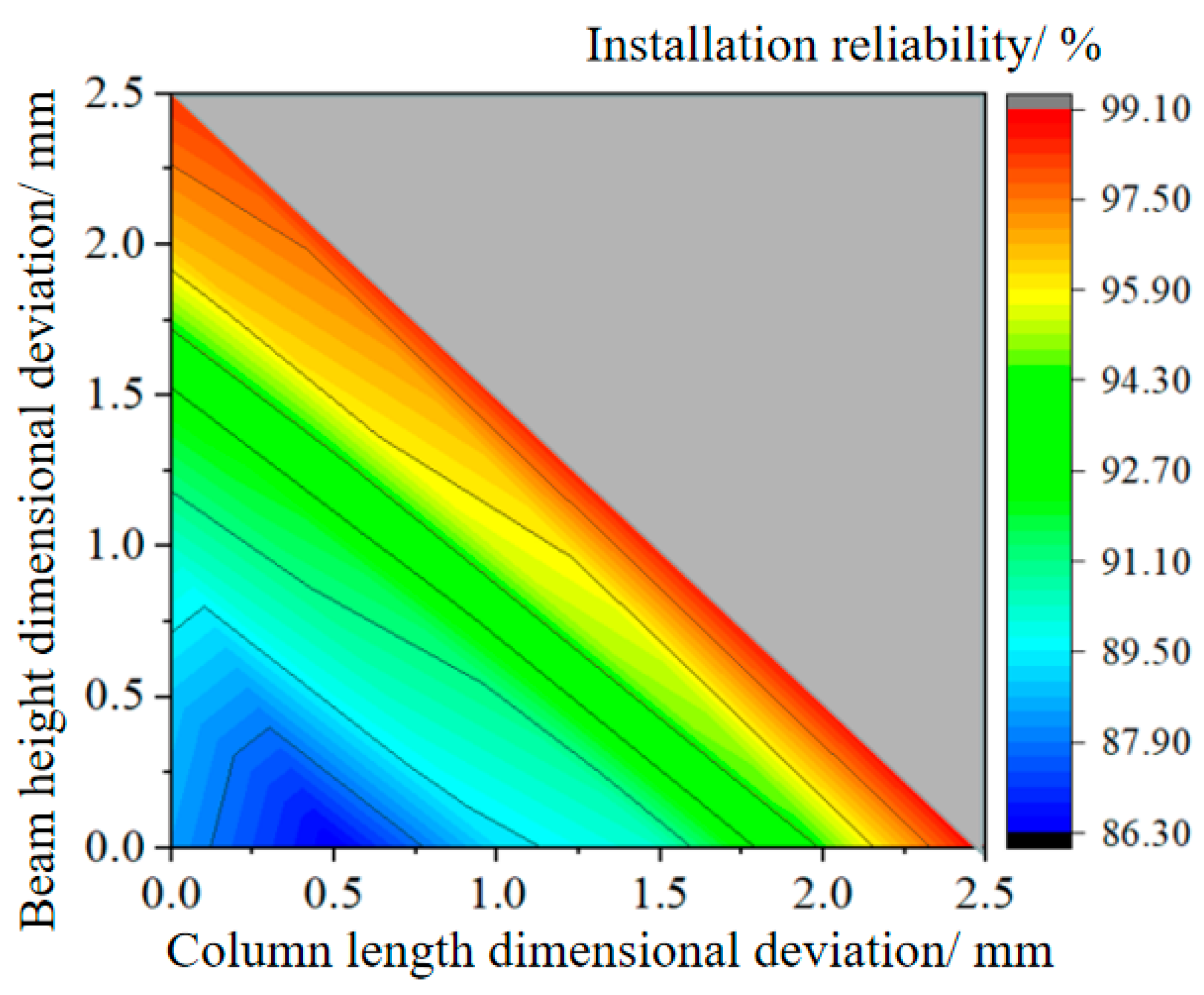
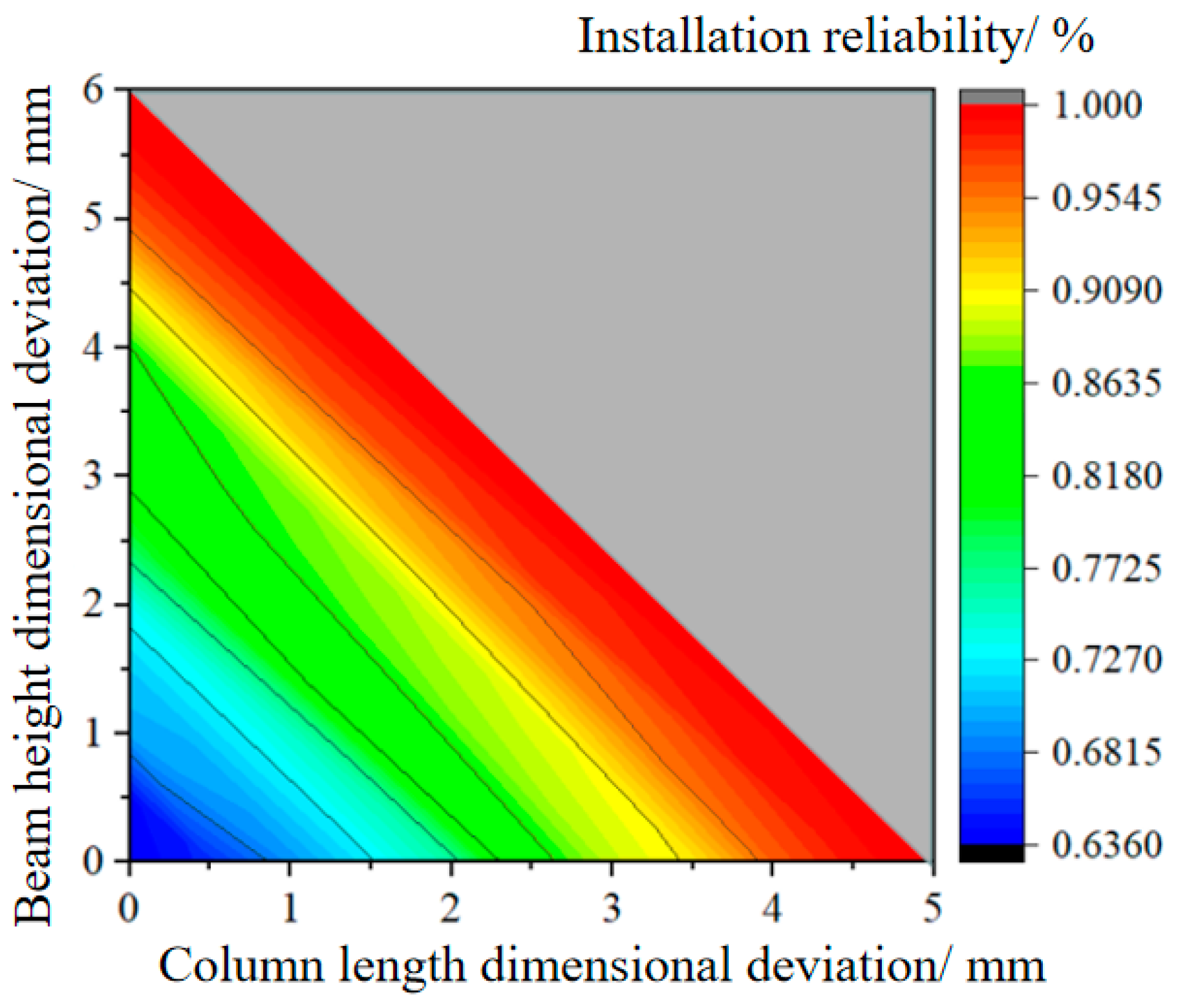

| Canonical Name | Items | Permissible Tolerance | |||||
|---|---|---|---|---|---|---|---|
| Staircase | External Wall Panel | Structural Wall Panel | Column | Slab | Beam | ||
| Tolerance manual for precast and prestressed concrete construction (MNL-135-00) | Axis position | ±13 | ±13 | ±13 | ±13 | ±25 | ±25 |
| elevation | ±9 | ±6 | ±13 | ±13 | ±19 | 13 | |
| verticality | - | 6 | 6 | 6 | - | 3 | |
| Connection width | ±19 | ±6 | ±9 | - | ±13 (component length 0~12 m) | ±6 | |
| ±19 (component length 12~18 m) | |||||||
| ±25 (component length > 18 m) | |||||||
| Shelving length | - | ±19 | ±19 | - | ±19 | ±19 | |
| Specification for tolerances and material specifications for concrete construction (ACI 117-2010) | Axis position | - | ±13 | ±13 | ±25 | ±25 | |
| elevation | - | −8~6 | −8~6 | - | −13~6 | ||
| verticality | - | ±13 | ±25 | - | ±25 | ||
| Joint width | - | ±3 | - | ±3 | ±3 | ||
| Shelving length | - | ±13 | - | ±13 | ±9 | ||
| Application Scope | Allowable Position Tolerance | |||||
|---|---|---|---|---|---|---|
| Dimensions < 0.4 m | 0.4~1 m | 1~1.5 m | 1.5~3 m | 3~6 m | Dimensions > 6 m | |
| Incomplete wall panels and floor slabs | 8 | 8 | 8 | 8 | 10 | 12 |
| Completed wall panels and floor slabs | 5 | 5 | 5 | 6 | 8 | 10 |
| Linear components (such as beams and columns) | 4 | 6 | 8 | - | - | - |
| Canonical Name | Items | Permissible Tolerance | |
|---|---|---|---|
| Code for Acceptance of Construction Quality of Concrete Structures (GB/T 50204-2015) | Axis Position | Vertical components (columns, wall panels and trusses) | 8 |
| Horizontal components (beams and floor slabs) | 5 | ||
| Elevation | Column, wall panel, beam, floor slab bottom, or top surface | ±5 | |
| Verticality | Height of installed columns and wall panels | 5 (component length ≤ 6 m) | |
| 10 (component length ≥ 6 m) | |||
| Shelf length | Beam and slab | ±10 | |
| Joint width | Wall panel joint width | ±5 | |
| Technical Standards for Prefabricated Concrete Buildings (GB/T 51231-2016) | Axis position | Vertical components (columns, wall panels, and trusses) | 8 |
| Horizontal components (beams and floor slabs) | 5 | ||
| Elevation | Column, wall panel, beam, floor slab bottom, or top surface | ±5 | |
| Verticality | Height of installed columns and wall panels | 5 (component length ≤ 6 m) | |
| 10 (component length ≥ 6 m) | |||
| Inclination | Beam and truss | 5 | |
| Shelf length | Column, wall, slab, beam, and truss | ±10 | |
| Joint width | Wall panel joint width | ±5 | |
| Technical Code for Prefabricated Concrete Structures (JGJ 1-2014) | Axis position | Vertical components (columns, wall panels, and trusses) | 10 |
| Horizontal components (beams and floor slabs) | 5 | ||
| Elevation | Column, wall panel, beam, floor slab bottom, or top surface | ±5 | |
| Verticality | Column and wall panel | 5 (component length ≤ 6 m) | |
| 10 (component length 5~10 m) | |||
| 10 (component length ≥ 10 m) | |||
| Inclination | Beam and truss | 5 | |
| Shelf length | Column, wall, slab, beam, and truss | ±10 | |
| Joint width | Wall panel joint width | ±5 | |
| Items | Wall Panel Installation Axis | Column Installation Axis | ||||||
|---|---|---|---|---|---|---|---|---|
| Sum of Squares | Degrees of Freedom | Mean Square Sum | F Value | Sum of Squares | Degrees of Freedom | Mean Square Sum | F Value | |
| Regression | 0.133 | 20 | 0.013 | 92.331 | 0.103 | 18 | 0.0011 | 80.122 |
| Residual | 0.0188 | 146 | 0.001 | 0.0155 | 187 | 0.000 | - | |
| Total sum of squares | 0.152 | 166 | - | - | 0.0118 | - | - | - |
| Goodness of fit R2 | 0.968 | - | - | - | 0.891 | - | - | - |
| Parameter | Wall Panel Installation Axis | Column Installation Axis | ||||||
|---|---|---|---|---|---|---|---|---|
| Estimated Value | Standard Error | 95% Confidence Interval | Estimated Value | Standard Error | 95% Confidence Interval | |||
| Lower Limit | Upper Limit | Lower Limit | Upper Limit | |||||
| 0.81 | 0.043 | 0.764 | 0.852 | 0.640 | 0.092 | 0.548 | 0.732 | |
| 3.06 | 0.159 | 2.900 | 3.219 | 4.647 | 0.430 | 4.217 | 5.076 | |
| 0.64 | 0.042 | 0.598 | 0.682 | 0.526 | 0.089 | 0.548 | 0.732 | |
| Component Type | Number of Measurement Points | Mean Value/mm | Standard Deviation/mm | Allowable Deviation/mm | Qualification Rate |
|---|---|---|---|---|---|
| Prefabricated wall panel | 166 | 4.09 | 3.51 | 8 | 88.6% |
| Prefabricated column | 205 | 4.77 | 2.19 | 8 | 92.2% |
| Allowable Deviation/mm | 4 | 5 | 6 | 7 | 8 | 9 | |
|---|---|---|---|---|---|---|---|
| Qualification rate | Prefabricated wall panels | 62.0% | 75.9% | 80.7% | 85.5% | 88.6% | 90.4% |
| Prefabricated columns | 40.0% | 61.0% | 72.7% | 84.9% | 92.2% | 95.1% | |
| Component Width/m | Minimum Joint Width/mm | Minimum Joint Thickness/mm |
|---|---|---|
| 1.8 | 12 | 8 |
| 2.4 | 12 | 8 |
| 3.6 | 14 | 8 |
| 4.8 | 15 | 10 |
| 6.0 | 16 | 10 |
| Items | Prefabricated Column Width | Prefabricated Beam Length | Joint Width | Axis Dimension | ||||
|---|---|---|---|---|---|---|---|---|
| C1 | C2 | C3 | B1 | B2 | B3 | W | La | |
| Distribution types | Normal distribution | Normal distribution | Uniform distribution | Logarithmic distribution | ||||
| Component design dimensions | 360 | 360 | 360 | 3600 | 3900 | 2400 | 10/20 | 11,050 |
| Mean of dimensional deviations | 1.336 | −3.002 | - | 3.06 | ||||
| Standard deviation of dimensional deviations | 1.010 | 1.382 | - | 0.64 | ||||
| Items | Prefabricated Column Length | Prefabricated Beam Height | Joint Width | Axis Dimension |
|---|---|---|---|---|
| C | B | W | La | |
| Distribution types | Normal distribution | Normal distribution | Uniform distribution | Logarithmic distribution |
| Component design dimensions | 2170 | 800 | 10/20 | 3060 |
| Mean of dimensional deviations | 1.883 | 2.449 | - | 3.06 |
| Standard deviation of dimensional deviations | 4.344 | 3.272 | - | 0.64 |
Disclaimer/Publisher’s Note: The statements, opinions and data contained in all publications are solely those of the individual author(s) and contributor(s) and not of MDPI and/or the editor(s). MDPI and/or the editor(s) disclaim responsibility for any injury to people or property resulting from any ideas, methods, instructions or products referred to in the content. |
© 2023 by the authors. Licensee MDPI, Basel, Switzerland. This article is an open access article distributed under the terms and conditions of the Creative Commons Attribution (CC BY) license (https://creativecommons.org/licenses/by/4.0/).
Share and Cite
Long, H.; Luo, X.; Liu, J.; Dong, S. The Analysis and Application of Installation Tolerances in Prefabricated Construction Based on the Dimensional Chain Theory. Buildings 2023, 13, 1799. https://doi.org/10.3390/buildings13071799
Long H, Luo X, Liu J, Dong S. The Analysis and Application of Installation Tolerances in Prefabricated Construction Based on the Dimensional Chain Theory. Buildings. 2023; 13(7):1799. https://doi.org/10.3390/buildings13071799
Chicago/Turabian StyleLong, Hao, Xiaoyong Luo, Jinhong Liu, and Shuang Dong. 2023. "The Analysis and Application of Installation Tolerances in Prefabricated Construction Based on the Dimensional Chain Theory" Buildings 13, no. 7: 1799. https://doi.org/10.3390/buildings13071799
APA StyleLong, H., Luo, X., Liu, J., & Dong, S. (2023). The Analysis and Application of Installation Tolerances in Prefabricated Construction Based on the Dimensional Chain Theory. Buildings, 13(7), 1799. https://doi.org/10.3390/buildings13071799






